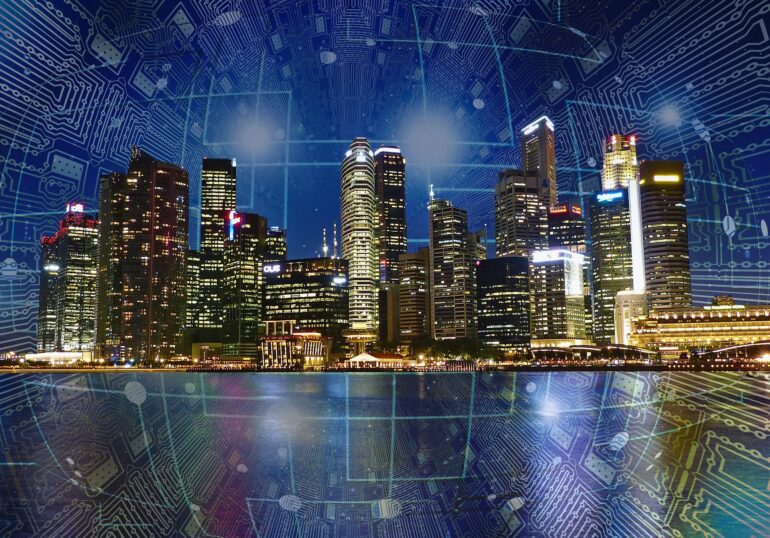TL;DR:
- AI-enhanced technologies improve public safety and security
- Video surveillance technology is an affordable force multiplier that delivers effective results
- AI can be used for crowd estimation, weapon detection, critical hardware failures, and reducing congestion
- AI enables security teams to identify potential threats quickly and offer real-time support to first responders
- AI can optimize fleet deployment and reduce bottlenecks at transit stations
- AI-powered technologies can protect privacy without compromising security
- Filtering irrelevant data is challenging, and AI can help identify specific threats
- A specific purpose is necessary to achieve true business intelligence with AI-powered technologies
- The human element is crucial in maximizing the benefits of AI-powered security systems.
Main AI News:
As security risks continue to pose a threat in cities, transit organizations, and public-facing businesses, AI-enhanced technologies are being adopted to identify and respond to these risks more effectively. The rise of video surveillance technology has become an affordable force multiplier that delivers effective results. While there are concerns about security analytics with “artificial intelligence,” the machine is not capable of thinking, and its abilities come from algorithms that humans define, manage, and validate.
However, combining human interaction with AI, deep learning, and machine learning can be an effective solution to streamline operations and enhance public safety in a community. AI-enhanced technologies are often used for tasks that would otherwise be difficult for humans to do, including crowd estimation, weapon detection, identifying critical hardware failures, enhancing investigations, and reducing congestion to improve the flow of people or vehicles.
The implementation of AI in security teams enables the identification of potential threats more quickly and offers real-time support to first responders. For instance, video analytics with AI can intelligently classify objects, people, loiterers, crowds, cars, and the direction of travel. The ability to have machines label this data makes it quicker and easier for responders and investigators to identify the people, objects, or moments that matter.
Transit authorities have also realized the power of AI-enhanced technologies. When onboard systems are connected to wayside systems, transit agencies can use AI to optimize fleet deployment and reduce bottlenecks at the tram, train, and metro stations, especially during rush hours. Operators can receive an alert when crowds are forming and deploy more trains to the network.
Furthermore, AI-powered technologies can protect the privacy of residents and visitors without compromising security. Balancing people’s right to privacy with improving safety and security has become a concern with the proliferation of video surveillance in communities. However, tools are available to protect people’s privacy by automatically blurring people and restricting access to the original footage except on a need-to-know basis.
The deployment of security systems in cities, transit organizations, and public-facing businesses has resulted in a vast amount of data that can be overwhelming for security personnel. As more cameras, sensors, and other devices are being deployed, the challenge lies in filtering out irrelevant data and focusing on essential information to improve operations and the resident experience.
AI-powered technologies can play a vital role in cutting through the noise and enabling security teams to identify specific threats efficiently. However, to maximize the benefits of these technologies, the team needs to be clear on the fundamental questions they want to answer from the data. What problem are they trying to solve? What information do they need to solve this problem? What’s the best tool for the job? And when they get this information, what are they going to do about it?
Deploying video analytics or other AI-powered technologies should not be done just for the sake of it. To achieve true business intelligence, it is essential to focus on a specific purpose, whether it be improving security, safety, operations, or user experience. This will help identify which technologies can provide the answers the team is seeking and enable them to use the data in a meaningful way.
It is crucial to recognize that the human element is key to maximizing the benefits of AI-powered security systems. Technologies that include deep learning or machine learning can be a great resource, but a human operator must define what is important, instruct the machine, validate the data, and ultimately decide what to do with that information. When combined, this force multiplier effect can help cities respond to incidents faster, streamline operations, and use data insights to enhance their communities.
Conlcusion:
The adoption of AI-powered technologies in public safety and security presents a significant opportunity for the market. With the rise of video surveillance technology and the increasing amount of data being generated, the deployment of AI-enhanced technologies can enable security teams to respond more effectively to potential threats and enhance operations.
However, it is crucial for businesses to focus on a specific purpose and to recognize that the human element is key to maximizing the benefits of these technologies. As such, the market should strive to incorporate AI-powered technologies into their security systems while maintaining a clear understanding of their goals and utilizing the expertise of trained professionals to achieve the best results.

